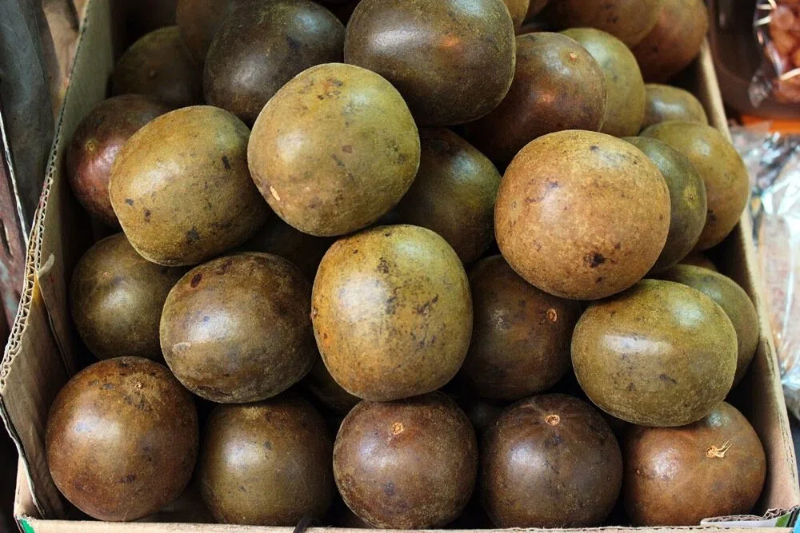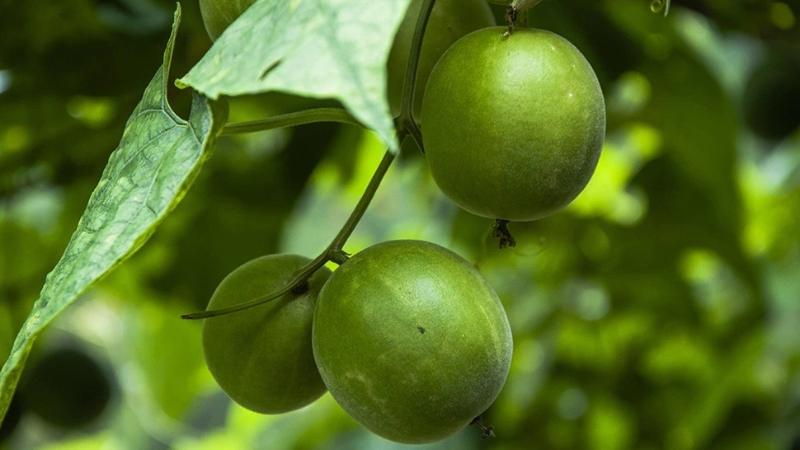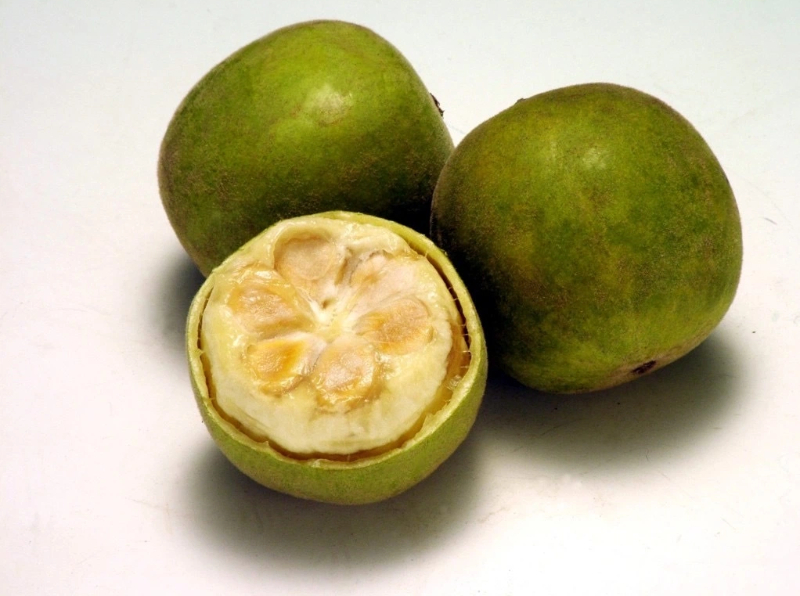Views: 222 Author: Sara Publish Time: 2025-10-30 Origin: Site








Content Menu
● Safety and Health Considerations
● Benefits for Health-Focused Applications
● Practical Usage and Formulation Tips
● FAQ
>> 1. How does Monk Fruit compare to sugar in terms of taste and aftertaste?
>> 2. Is Monk Fruit safe for diabetics and people watching calories?
>> 3. Can Monk Fruit cause GI discomfort or allergies?
>> 4. How should Monk Fruit be used in hot beverages or baking?
>> 5. What should manufacturers consider when blending Monk Fruit in commercial products?
Monk Fruit has emerged as a prominent natural, zero-calorie sweetener in global markets, favored by manufacturers seeking clean-label ingredients for foods, beverages, and healthcare products. For companies like yours—China-based factories dedicated to natural sweeteners, functional polyols, and dietary fiber—Monk Fruit offers a compelling ingredient for blended-sweetener development, tablet formulations, and OEM/ODM services. This article examines whether Monk Fruit is bad for health, weighing safety, metabolic effects, taste profiles, and practical formulation considerations for health-focused product development. It also spotlights how your manufacturing capabilities can translate these insights into market-ready solutions for overseas OEM customers, with an emphasis on regulatory compliance, quality assurance, and scalable production.

Monk Fruit, scientifically known as Siraitia grosvenorii, yields mogrosides—the compounds responsible for its intense sweetness. Mogroside V is typically the dominant mogroside in commercial extracts, contributing significantly to sweetness without providing calories. The fruit's sweetness can be 100 to 250 times that of sucrose, which explains why most Monk Fruit sweeteners are used in small concentrations or blended with other sweeteners to modulate taste and mouthfeel. Processing methods produce powders, liquids, and blends used across food, beverage, and healthcare formats. Regulatory status varies by region; in many jurisdictions, Monk Fruit and mogrosides are recognised as safe or GRAS (Generally Recognized as Safe) for use in food products, though labeling and purity requirements differ. For manufacturers, Monk Fruit can be integrated into your product lines as a stand-alone sweetener or as part of a blended sweetener system, enabling formulation flexibility for beverages, dairy, baked goods, and nutraceutical tablets.
The prevailing consensus from regulatory agencies and health-focused reviews is that Monk Fruit sweeteners are safe for general consumption. The zero-calorie profile and minimal glycemic impact make Monk Fruit appealing to diabetics, low-carbohydrate diets, and weight-management programs. Commonly, mogrosides do not raise blood glucose or insulin levels in the short term, supporting intentions to curb caloric intake without sacrificing sweetness in consumer products. However, as with any food ingredient, moderation is prudent, and certain individuals may experience gastrointestinal sensitivity or mild digestive adjustments when introducing new sweeteners. Long-term human data remains limited for some populations, so healthcare guidance is advised for pregnant individuals or young children, depending on regional regulatory recommendations. For manufacturing and QA teams, robust sourcing controls, batch testing, and clear labeling are essential to ensure consistent mogroside content and absence of unwanted impurities in commercial products. A comparative chart illustrating caloric and glycemic impacts versus conventional sugar can help product developers understand tradeoffs in formulating health-focused offerings. In practice, these considerations translate into the need for standardized extraction yields, precise Mogroside V quantification, and clear documentation of processing steps in GMP-compliant facilities.
- Calorie reduction and weight management: Monk Fruit provides sweetness without calories, aiding product developers in creating lower-energy formulations that still satisfy consumer taste expectations. This aligns with the shift toward clean-label products and health-centric marketing in foods, drinks, and nutraceuticals.
- Glycemic control and diabetes management: With minimal or no impact on postprandial glucose, Monk Fruit supports glycemic control strategies in beverages, dairy, and fortified foods designed for diabetic and prediabetic populations.
- Keto and low-carb compatibility: The zero-calorie profile makes Monk Fruit suitable for ketogenic and low-carbohydrate formulations, enabling brands to market products that appeal to carbohydrate-conscious consumers.
- Oral health considerations: Unlike fermentable sugars, Monk Fruit does not contribute to dental caries, an attractive feature for oral-care products, functional chewing gums, and fortified beverages targeting oral health.
- Clean-label appeal: The natural origin and minimal processing of Monk Fruit extracts can strengthen consumer trust when used in blends and finished products, particularly in markets with rising demand for transparent ingredient lists.
- Relevance to OEM/ODM and blended-sweetener development: Your factory's strengths—custom formulation, blending with other polyols or non-nutritive sweeteners, and tablet-ready blends—enable customers to tailor taste, texture, and delivery formats for overseas manufacturing.

- Be mindful of sweetness intensity: Because Monk Fruit is extremely potent, small miscalculations can overwhelm formulations. Use precise mogroside content specifications and consider taste-correcting blends to balance aftertaste and mouthfeel.
- Blending strategies: Monk Fruit is frequently blended with erythritol, xylitol, allulose, or dextrose to achieve sugar-like mouthfeel and reduce lingering aftertaste. Blends can also help optimize dissolution, texture, and caloric parity in beverages and baked goods.
- Stability under processing conditions: Monk Fruit sweeteners typically exhibit good heat stability, enabling use in baked goods and hot beverages. Formulators should verify stability across pH ranges, storage conditions, and shelf-life expectations for each product line.
- Dosage guidance by application: Beverages often require lower usage levels due to intense sweetness, whereas baked goods and dairy products may need careful balancing with carrier ingredients to maintain texture and flavor.
- Manufacturing considerations: For tablet production, uniform distribution of Monk Fruit extracts is essential, with attention to solubility, compression properties, and the potential need for excipients to support tablet integrity.
- Quality assurance: Establish supplier qualification protocols for mogroside-rich extracts, implement routine analytical testing (e.g., HPLC profiles for mogrosides), and maintain batch traceability to support regulatory compliance in target markets.
- Media opportunities: Throughout product development documentation, reference images of Monk Fruit farming, extraction, and finished blends as strategic editorial assets, while ensuring media plans align with brand messaging and QA standards.
A concise overview of regulatory status helps risk assessment for new product introductions:
- United States: Monk Fruit and mogrosides are commonly used in foods with GRAS recognition for the extracts; labeling often highlights the product as a sugar substitute or natural sweetener, with attention to mogroside concentration and purity.
- European Union: Approvals may vary; some mogroside extracts are accepted in food products, with packaging and ingredient declarations detailing mogroside content and the absence of sugar.
- Asia-Pacific and other regions: Regulatory acceptance tends to be favorable, particularly for natural sweetener ingredients, but compliance with local labeling, purity standards, and import requirements remains essential.
For manufacturers, sourcing high-quality monk fruit extracts and providing robust documentation on purity (mogroside content), absence of unwanted sugars, and batch-by-batch testing supports smoother regulatory clearance across markets.
Monk Fruit versus other natural sweeteners:
- Versus Stevia: Both are zero-calorie natural sweeteners, but Monk Fruit often has a more sugar-like sweetness profile with milder aftertaste in some blends, while Stevia can carry bitter or licorice-like notes at higher concentrations. Regulatory pathways and consumer perception of naturalness can differ by market, influencing choice for blended-sweetener formulations.
- Versus Erythritol: Both are low-calorie; erythritol adds a small caloric contribution and can cause digestive effects in some individuals. Monk Fruit offers zero calories and is often used in combination to balance sweetness without adding bulk or gastrointestinal impact.
- Versus Xylitol and Allulose: Xylitol has calories and potential digestive effects; allulose provides near-zero calories with minimal glycemic impact in many cases but may have supply and pricing considerations. Monk Fruit remains a flexible option for clean-label positioning and formulation versatility.
Monk Fruit is a generally safe, calorie-free sweetener with robust potential for health-focused product development when used thoughtfully and in combination with complementary ingredients. Its compatibility with blended-sweetener systems, tablet formulations, and OEM/ODM services makes it a strategic fit for overseas manufacturers seeking clean-label solutions and scalable production. For businesses like yours, leveraging Monk Fruit within a controlled supply chain, supported by rigorous QA and regulatory awareness, can drive innovation in beverages, dairy, baked goods, and healthcare-related products while meeting diverse market demands.

Monk Fruit delivers intense sweetness with minimal aftertaste when properly blended; taste balance is often achieved through formulation strategies and excipients in blends.[1][7]
Yes. Monk Fruit provides sweetness without significant caloric content or glycemic impact for most individuals, aligning with diabetic-friendly and calorie-conscious product design.[4][10]
Most consumers tolerate Monk Fruit well, but some individuals may experience digestive adjustments with new sweeteners; monitor blends and consider gradual introduction in new products.[2][8]
Due to its heat stability, Monk Fruit blends can perform in hot beverages and baked goods, though formulations often require balancing with carriers or other sweeteners to maintain texture and moisture.[3][1]
Focus on mogroside content, blend ratios with supporting sweeteners, mouthfeel, stability, labeling, and regulatory compliance; your OEM/ODM capabilities enable scalable, customized solutions.[5][2]
[1](https://www.tastingtable.com/944990/everything-you-need-to-know-about-monk-fruit-sweetener/)
[2](https://www.foodandnutritionjournal.org/volume13number1/the-battle-of-natural-sweeteners-a-comprehensive-guide-to-monk-fruit-and-stevia/)
[3](https://www.whatsugar.com/monk-fruit)
[4](https://www.healthline.com/nutrition/monk-fruit-sweetener)
[5](https://www.lakanto.com/blogs/recipes/how-to-use-monkfruit-sweeteners)
[6](https://transparencyfoods.com/blogs/news/types-of-monk-fruit-sweeteners-explained)
[7](https://www.webmd.com/diet/what-to-know-about-monk-fruit-sugar)
[8](https://www.cleanprogram.com/blogs/health-lifestyle/the-magic-of-monk-fruit)
[9](https://monkvee.com/blogs/monkvee-news/choosing-the-healthiest-monk-fruit-a-comprehensive-guide)
[10](https://health.clevelandclinic.org/why-you-should-use-monk-fruit-sweetener)
